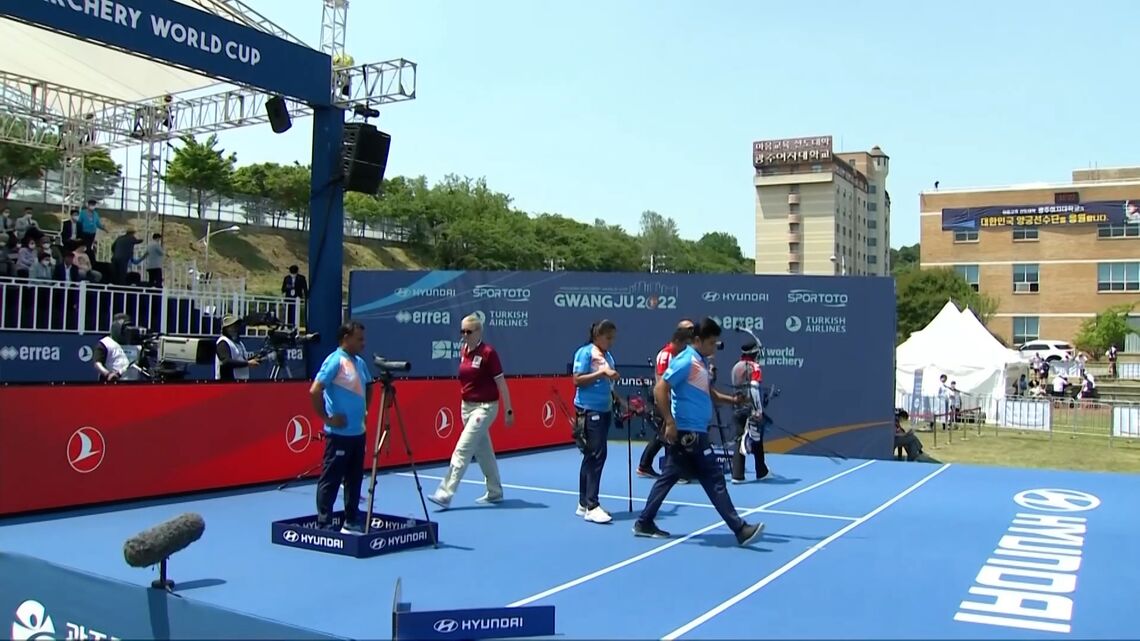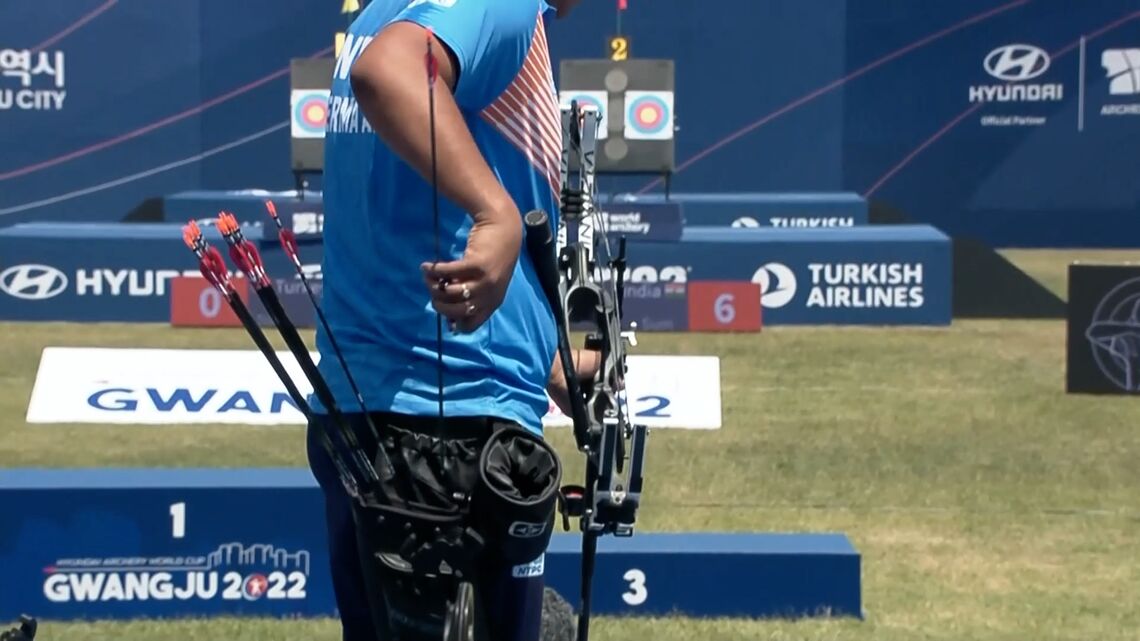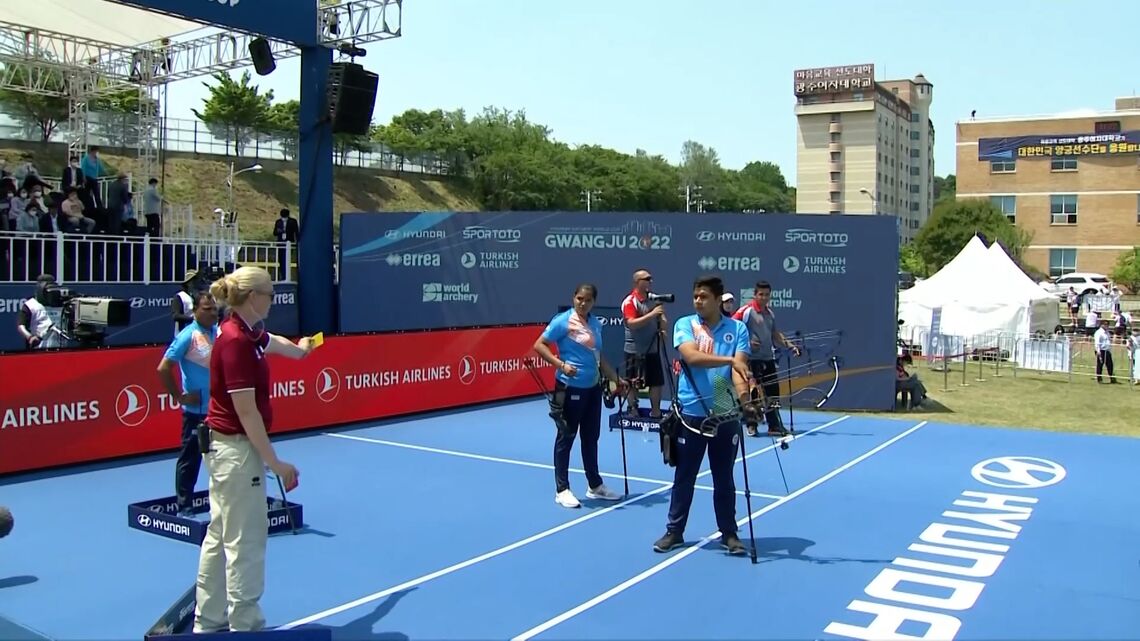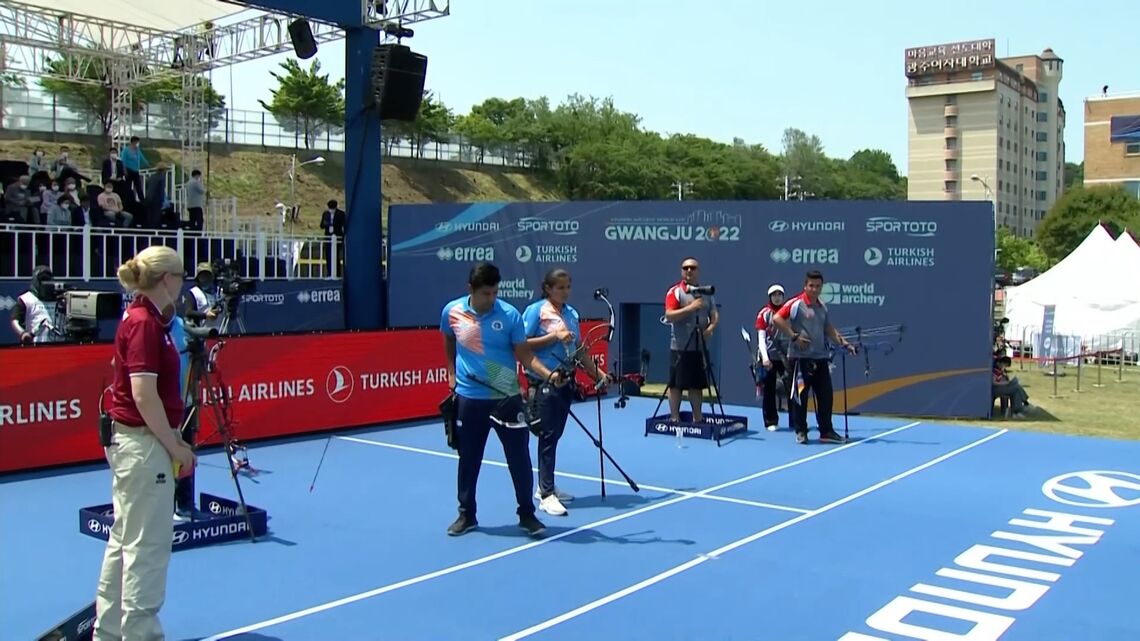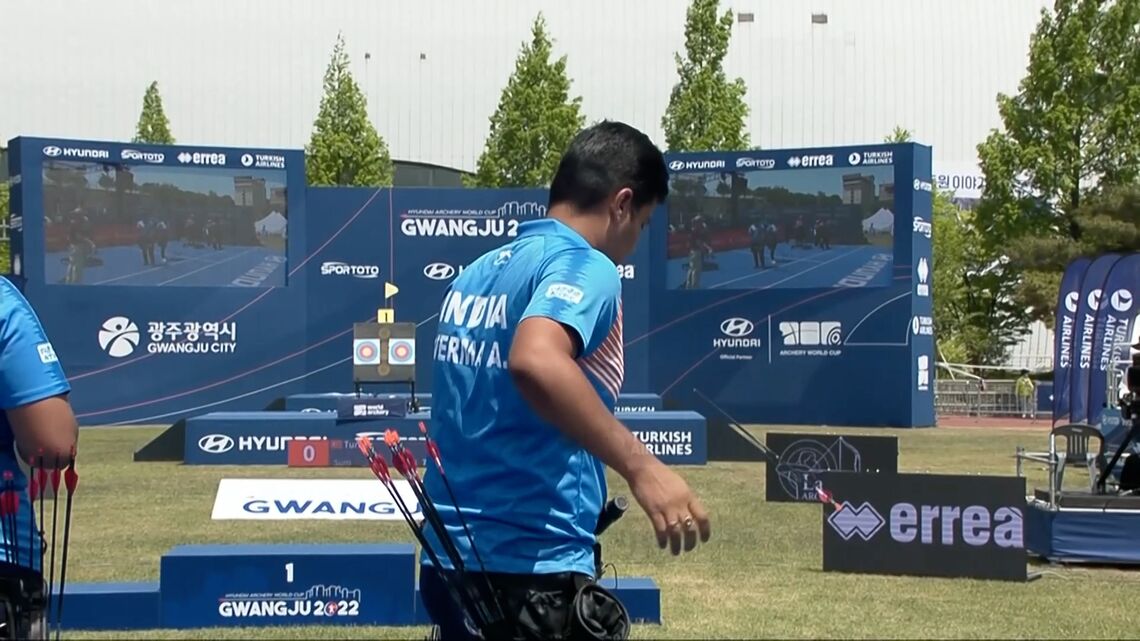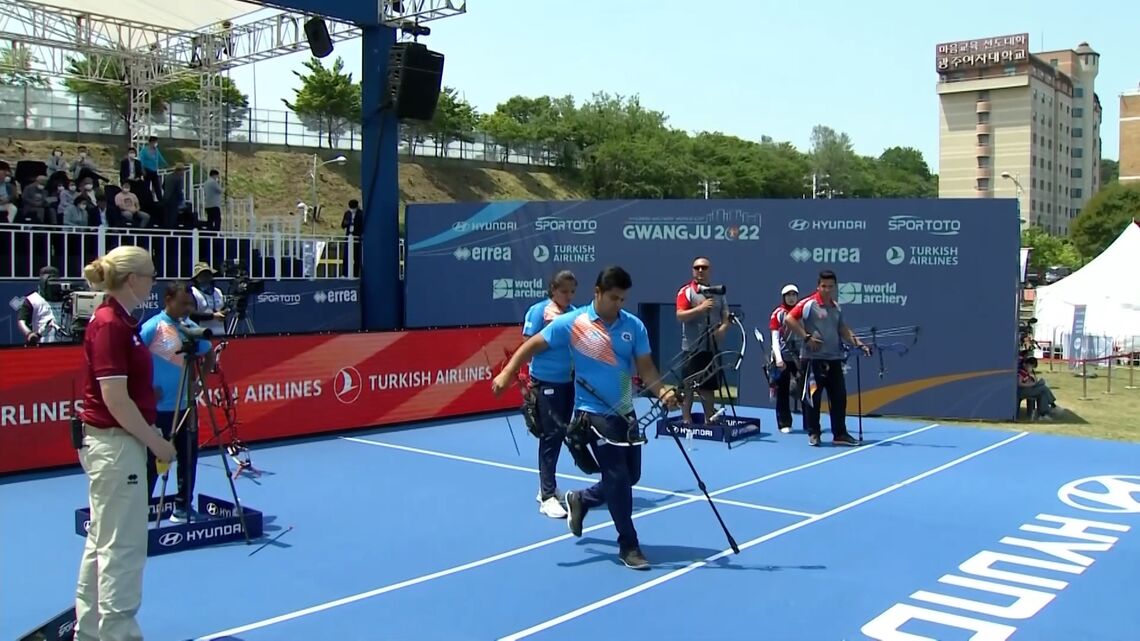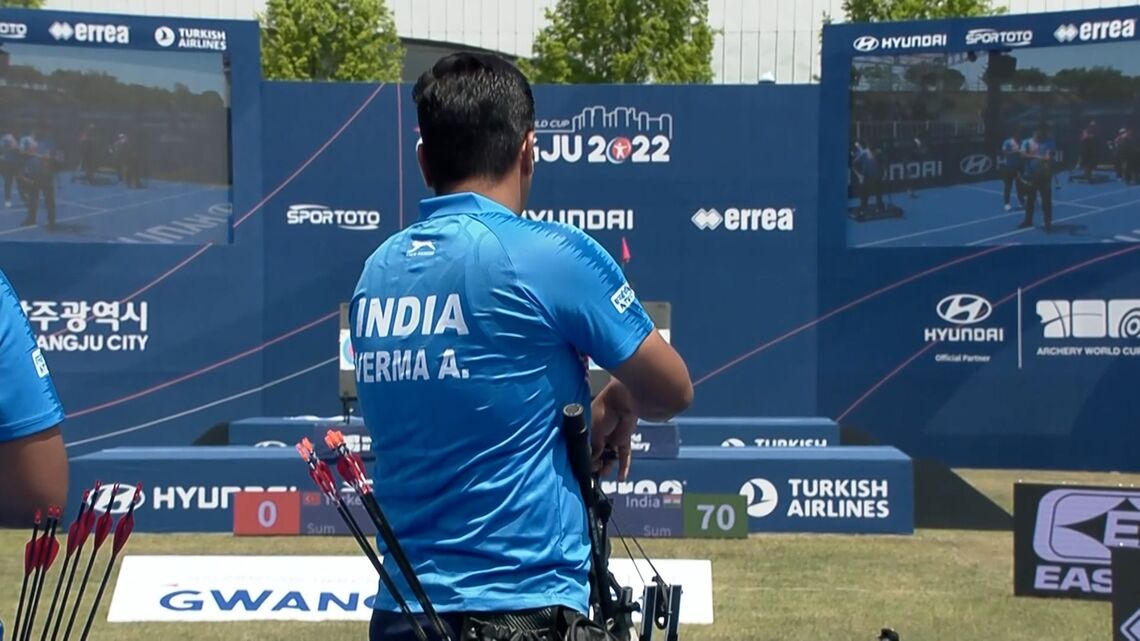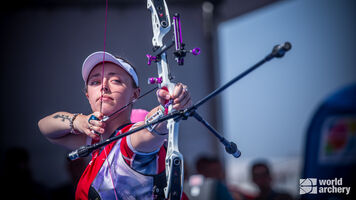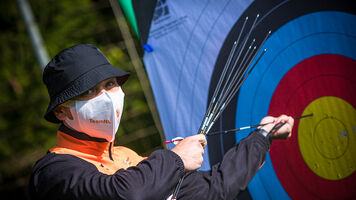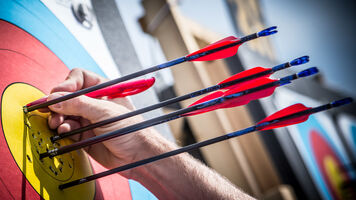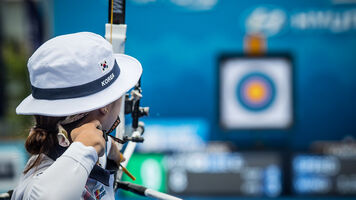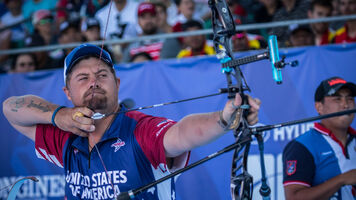Nicky Hunt: Why India was shown a yellow card in Gwangju

It was during the third end of the mixed team bronze medal match in Gwangju that the judge would pull a yellow card on Abhishek Verma.
The Indian pair was trailing Turkey by two points at this halfway stage of the bronze medal match – but they did go on to win and climb the podium at the second stage of the 2022 Hyundai Archery World Cup.
The yellow card, effectively a time penalty in archery’s team matchplay, didn’t end up costing India. But it might have.
Here’s what happened.
As the buzzer goes and Abhishek strides over the one-metre waiting line, the judge’s arm goes up, her yellow card in hand, and she points to the timing clock.
Verma returns back behind the waiting line, throws his arrow on the ground, then heads back towards the shooting line, loads his arrow, aims – and shoots a 10.
Archery’s penalties – yellow and red cards – aren’t all that common, especially not at the elite level. This one, though, was captured perfectly on the live broadcast and it’s a perfect opportunity to explore what yellow cards mean and how to deal with them.
In team and mixed team matches there is a 10-second lead-in timer before each shooting end. There is then a second signal, which indicates that a team’s shooting time has begun.
That time is 80 seconds for mixed team matches, just 20 seconds an arrow, so archers are often itching to get started. But nobody can cross the one-metre waiting line during the 10-second lead-in. Verma did.
A yellow card is shown when one of three rules is broken – an archer crossing the waiting line early (like this situation), taking an arrow out of their quiver before crossing the waiting line or a team having more than one archer across the waiting line at the same time.
The penalty is a reset. The archer has to return behind the waiting line and must also return their arrow to their quiver – or, as Abhishek did, throw it on the floor – and start again.
At the same time, the clock is still ticking.
Should a yellow card be ignored, it would turn into a red. A red card means the disqualification of an arrow. This is also shown if an archer shoots out of time.
India got away with the penalty. Abhishek, who is exceptionally experienced in the international arena, dealt with the reset and delivered a perfect shot.
But for someone so experienced, why did it happen at all?
In individual matchplay, archers can step over the waiting line during the 10-second lead-in – and they can load their arrow. They just can’t shoot until the second signal.
Verma, who won the third stage of the Hyundai Archery World Cup last season in Paris, probably just reverted to his normal process for an individual head-to-head. He might have been distracted by the pressure or the spotlight of the arena – sometimes it’s hard to think straight with everything going on around you – where everything happens faster than normal.
It might have just been a slip of the mind.
What makes his experience very obvious is the throw of the arrow. He didn’t waste time trying to work out why he had the yellow card, or put that same arrow away, he dropped it and moved on immediately. It’s what most of the top teams are taught to do.
And though that end was tight on time for Verma and teammate Avneet Kaur, they shot a 39 – before finishing the match with a perfect 40. It turned the match around and ultimately into a win, 156-155.
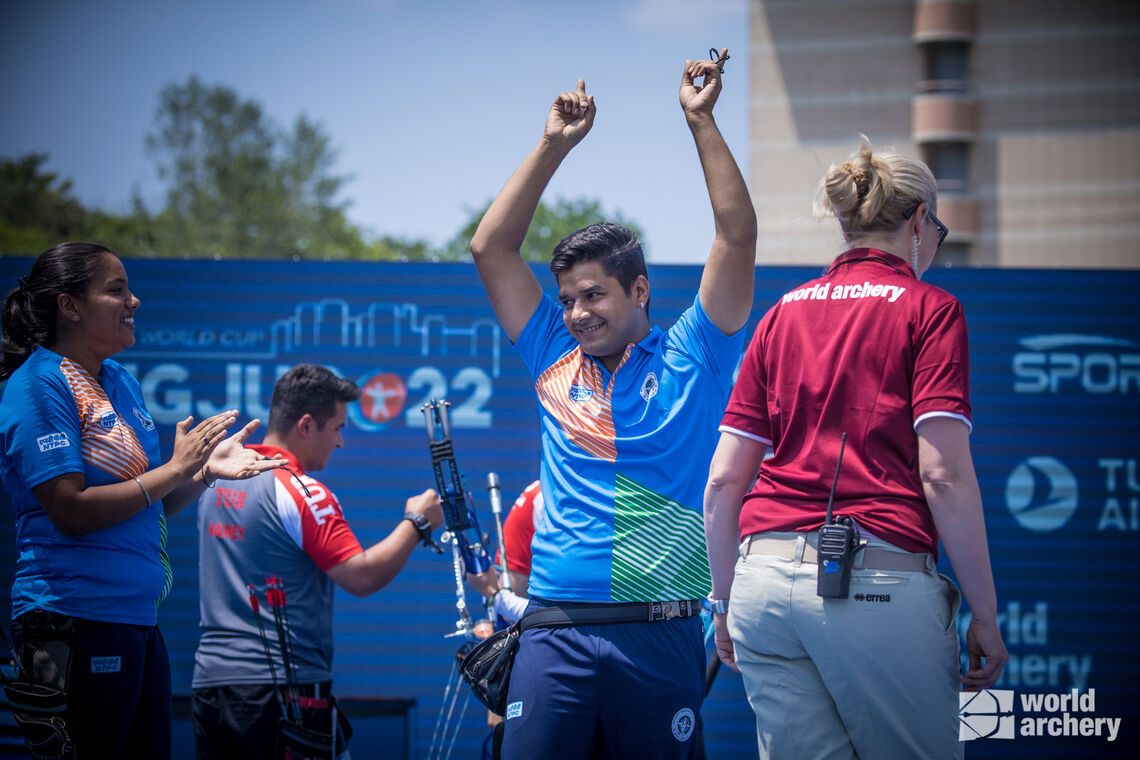
It’s very important that archers practice their team round rotation ahead of a big event. The lead archer bears the brunt of the responsibility – but everyone’s got to be aware, and be able to contribute in penalty situations, as delays cost seconds, which lose points.
Verma handled the situation perfectly. Many others might have become flustered.
It wouldn’t surprise me if the Indian team had practised fake yellow cards so that a team knows what to do in any circumstance – down to stepping back off the line and resetting or swapping in a new archer, which is another viable strategy.
(As long as each archer shoots once in a rotation, the order can change each time.)
In the arena in Gwangju, Abhishek Verma showed he was fallible – but he also showed how experienced and just how prepared he, and his Indian team, was for the main stage.
And that preparation made the difference in a tight clash for a spot on the podium.

